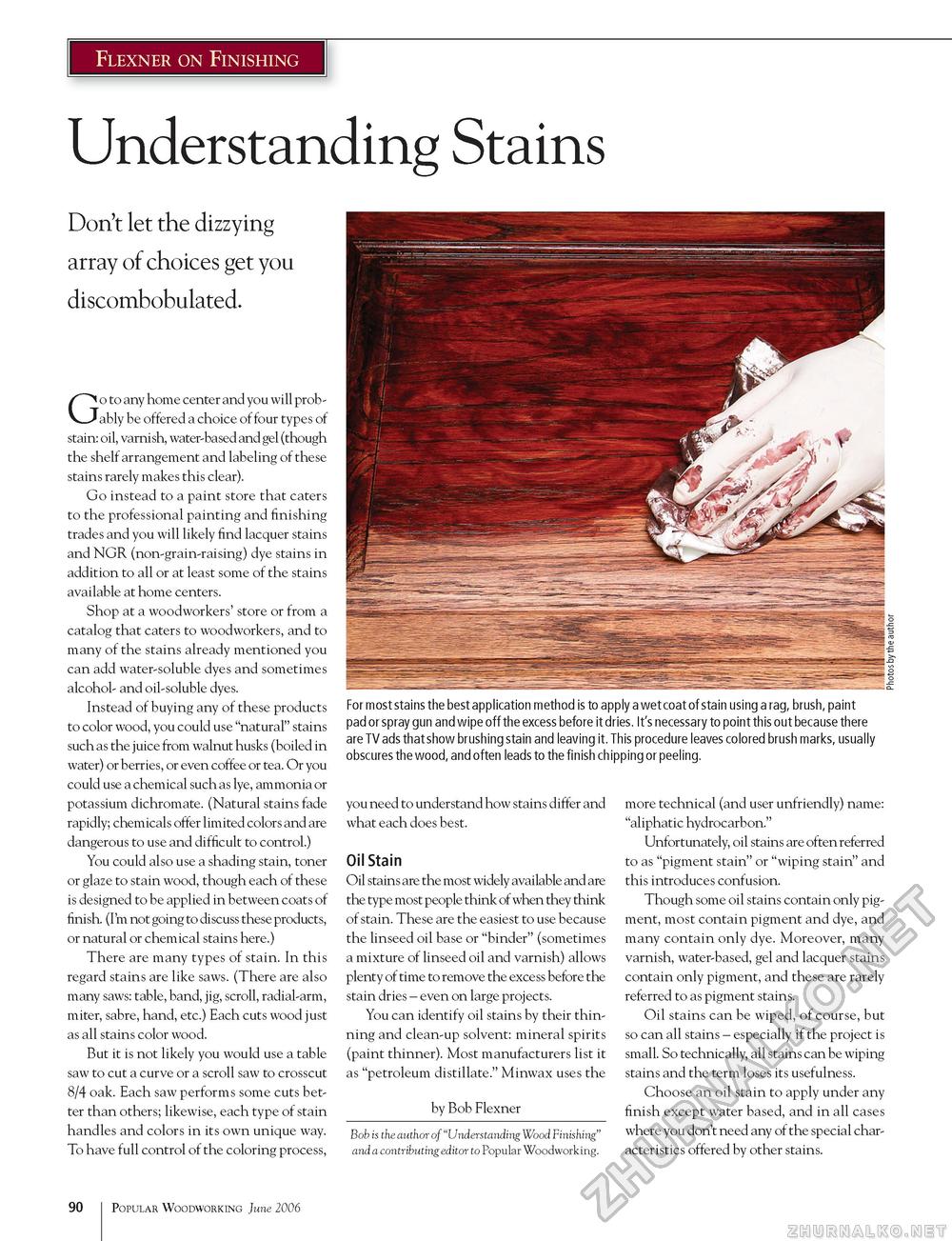Popular Woodworking 2006-06 № 155, страница 92
Flexner on Finishing Understanding Stains Don't let the dizzying array of choices get you discombobulated. Go to any home center and you will probably be offered a choice of four types of stain: oil, varnish, water-based and gel (though the shelf arrangement and labeling of these stains rarely makes this clear). Go instead to a paint store that caters to the professional painting and finishing trades and you will likely find lacquer stains and NGR (non-grain-raising) dye stains in addition to all or at least some of the stains available at home centers. Shop at a woodworkers' store or from a catalog that caters to woodworkers, and to many of the stains already mentioned you can add water-soluble dyes and sometimes alcohol- and oil-soluble dyes. Instead of buying any of these products to color wood, you could use "natural" stains such as the juice from walnut husks (boiled in water) or berries, or even coffee or tea. Or you could use a chemical such as lye, ammonia or potassium dichromate. (Natural stains fade rapidly; chemicals offer limited colors and are dangerous to use and difficult to control.) You could also use a shading stain, toner or glaze to stain wood, though each of these is designed to be applied in between coats of finish. (I'm not going to discuss these products, or natural or chemical stains here.) There are many types of stain. In this regard stains are like saws. (There are also many saws: table, band, jig, scroll, radial-arm, miter, sabre, hand, etc.) Each cuts wood just as all stains color wood. But it is not likely you would use a table saw to cut a curve or a scroll saw to crosscut 8/4 oak. Each saw performs some cuts better than others; likewise, each type of stain handles and colors in its own unique way. To have full control of the coloring process, For most stains the best application method is to apply a wet coat of stain using a rag, brush, paint pad or spray gun and wipe off the excess before it dries. It's necessary to point this out because there are TV ads that show brushing stain and leaving it. This procedure leaves colored brush marks, usually obscures the wood, and often leads to the finish chipping or peeling. you need to understand how stains differ and what each does best. Oil Stain Oil stains are the most widely available and are the type most people think of when they think of stain. These are the easiest to use because the linseed oil base or "binder" (sometimes a mixture of linseed oil and varnish) allows plenty of time to remove the excess before the stain dries - even on large projects. You can identify oil stains by their thinning and clean-up solvent: mineral spirits (paint thinner). Most manufacturers list it as "petroleum distillate." Minwax uses the by Bob Flexner Bob is the author of "Understanding Wood Finishing" and a contributing editor to Popular Woodworking. more technical (and user unfriendly) name: "aliphatic hydrocarbon." Unfortunately, oil stains are often referred to as "pigment stain" or "wiping stain" and this introduces confusion. Though some oil stains contain only pigment, most contain pigment and dye, and many contain only dye. Moreover, many varnish, water-based, gel and lacquer stains contain only pigment, and these are rarely referred to as pigment stains. Oil stains can be wiped, of course, but so can all stains - especially if the project is small. So technically, all stains can be wiping stains and the term loses its usefulness. Choose an oil stain to apply under any finish except water based, and in all cases where you don't need any of the special characteristics offered by other stains. 90 Popular Woodworking June 2006 |








